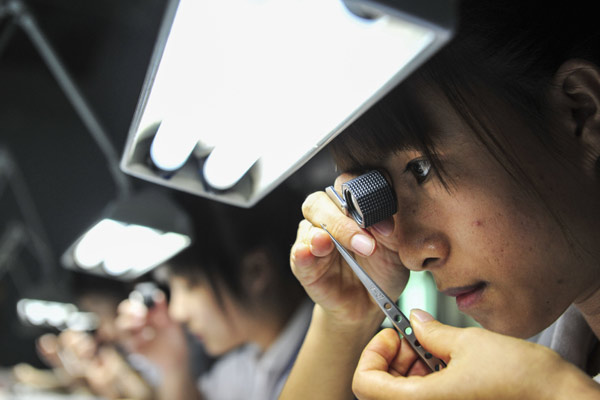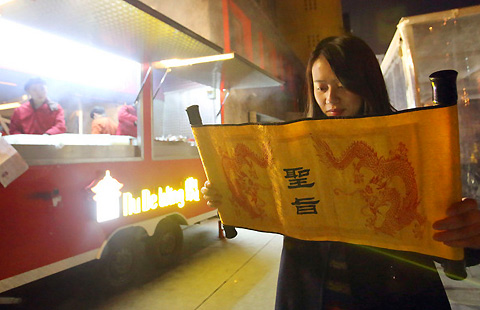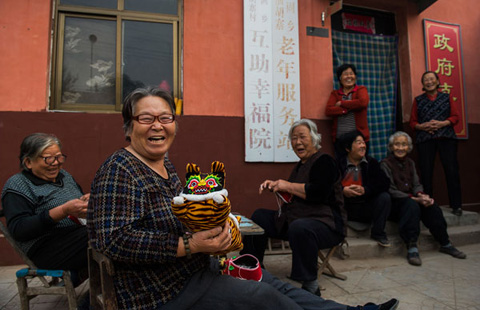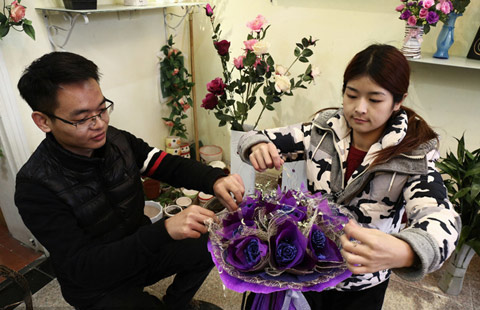Panyu has its work cut out to maintain shine
By Xu Jingxi (China Daily) Updated: 2014-11-27 08:08
 |
|
Workers examine polished diamonds at Guangzhou Evergreen Diamond Co Ltd in Panyu, Guangdong province. Guangzhou recorded diamond trade transactions of $3.59 billion in 2013, one-third of the country's total. [Chen Jimin / China Daily] |
Diamond district in Guangdong reels from the impact of rising costs, reports Xu Jingxi in Guangzhou
Transformation and upgrading are the buzzwords in the jewelry industry in Guangzhou's Panyu district, a key center of China's diamond industry, as exports falter and costs rise.
Panyu's jewelry exports surged from $2.53 billion in 2011 to $4.13 billion in 2013, according to customs data provided by the district's economic and trade promotion bureau—a growth rate of almost 28 percent a year.
But growth slowed to a crawl during the first three quarters of this year. Exports expanded just 5 percent to 19.8 billion yuan ($3.23 billion).
The diamond-cutting industry, a major business in Panyu, has seen orders slump. The outbreak of Ebola in some countries in western Africa, a big source of rough diamonds, forced governments there to tighten border controls or even close their borders. That choked off much of the rough diamond supply and drove up prices, which had been rising in recent years.
"Our orders this year are down 40 percent to 50 percent from the usual levels," said Yuan Zhonglin, a manager at Guangzhou Evergreen Diamond Co Ltd.
The Hong Kong-invested enterprise usually processes about 600,000 carats of raw diamonds a year, with an export value of $130 million, or one-third of the export value of Panyu's entire non-industrial diamond shipments.
"The price of rough diamonds keeps increasing but the price of polished diamonds does not, so our margins are being squeezed. And we also get fewer orders," Yuan said.
The company has nonetheless managed to maintain its output value by changing the kind of work it does, according to Li Minyi, secretary to president of Guangzhou Evergreen.
"We've gradually increased the share of big diamonds in our business because they provide higher added value than small diamonds. The share of big diamonds has risen from 40 to 50 percent to 60 to 70 percent.
"If we hadn't looked ahead and made that change, our output value this year would have been affected," she added.
- Cash crunch fans expectation on RRR cut
- US extends antidumping duties on China's thermal paper
- Modern food van with ancient look in Shanghai
- China home prices continue to cool in November
- Asia's top 3 billionaires all Chinese
- Old investment remedy the treatment for China's "new normal"
- China's solar sector opposes US anti-dumping ruling
- BMW to recall 846 cars in China
















